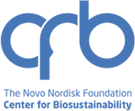lifelike
 lifelike copied to clipboard
lifelike copied to clipboard
Turning big data into contextualized knowledge. Lifelike is a modern application platform for data extraction, analysis and visualization.
Most recent version of the code has been moved to: https://github.com/biosustain/lifelike
 Lifelike
Lifelike



Lifelike is an open-source project that aims to provide a simple, yet powerful platform for turning structured and unstructured data from a variety of sources into a single, coherent and explorable knowledge graph.
Quick start
The easiest way to get started and run a fully functional development environment of Lifelike is to clone this repository and run the make up command:
git clone https://github.com/SBRG/lifelike.git
cd lifelike
make up
This will take a few minutes to complete, after which you can start using Lifelike by pointing your browser to http://localhost:8080.
You can log in using the default admin user [email protected] and password password.
Other installation methods
You can see more details about how to deploy lifelike in a production environment, or customize the development installation in the following sections.
- Docker with Docker Compose
- Kubernetes with Helm chart
Lifelike main concepts
Projects
Lifelike organizes content into projects. A project is a filesystem-like collection of resources either uploaded by users or generated by Lifelike based on other resources. Those resources can be all kinds of data, including structured data like spreadsheets, unstructured data like PDF files, images, or text documents.
Knowledge Domains
Lifelike structures knowledge around domains. A domain is a collection of semantically related entities belonging to a field of study.
Annotations
Annotations are a powerful way to attach context to your data in knowledge Domains, Lifelike automatically annotates all your data with Domain known entities as well as lets you define your own custom annotations.
Knowledge Graph
Domain data sources are annotated and stored in a graph database. A knowledge graph consists of nodes and edges. Nodes are domain entities and edges are relations between entities.
Visualizations
Visualizations are a powerful way to help you to understand the relationships between entities as well as a powerful tool to find new relationships as new data comes in.
Lifelike currently provides the following built-in visualization types:
- Maps
- Enrichment tables
- Sankey diagrams
- Pathway Browser
Other features
- Multi-user collaborative workbench
- Powerful search engine
Common development operations
You can run make help to see a list of available commands.
$ make help
usage: make [target]
development:
githooks Set up Git commit hooks for linting and code formatting
docker:
up Build and run container(s) for development. [c=<names>]
images Build container(s) for distribution.
status Show container(s) status. [c=<names>]
logs Show container(s) logs. [c=<names>]
restart Restart container(s). [c=<names>]
stop Stop containers(s). [c=<names>]
exec Execute a command inside a container. [c=<name>, cmd=<command>]
test Execute test suite
down Destroy all containers and volumes
reset Destroy and recreate all containers and volumes
diagram Generate an architecture diagram from the Docker Compose files
helm:
helm-lint Run helm lint on Lifelike chart
helm-dependency-update Install or update chart dependencies
helm-schema-gen Generate Helm chart values JSON schema
helm-docs Generate Helm chart README docs
helm-package Generate Lifelike helm chart package
helm-install Install or upgrade Lifelike chart
helm-install-single-node Install or upgrade Lifelike chart using the single-node example values
other:
help Show this help.
Architecture
Lifelike is a distributed system comprised of the following components:
Core services
- Appserver. Backend API service, written in Python using the the Flask framework.
- Client. Frontend Single Page Application, written in Typescript using the Angular framework.
- Statistical enrichment. Statistics generation microservice, written in Python using the the Flask framework.
- Cache invalidator. Recurrent task runner for bulk large computations and cache data management, written in Python.
- Graph data migrator. Utility service for migrating and versioning knowledge graph database, using the Liquibase database migration tool.
Backing services
- PostgreSQL as a RDBMS.
- Neo4j as a graph database.
- Elasticsearch as a full-text search engine.
- Redis as a key-value cache store.
- PDFParser as a document parsing library.
- Sendgrid as an email messaging service.
License
Lifelike is distributed under a modified MIT license.
